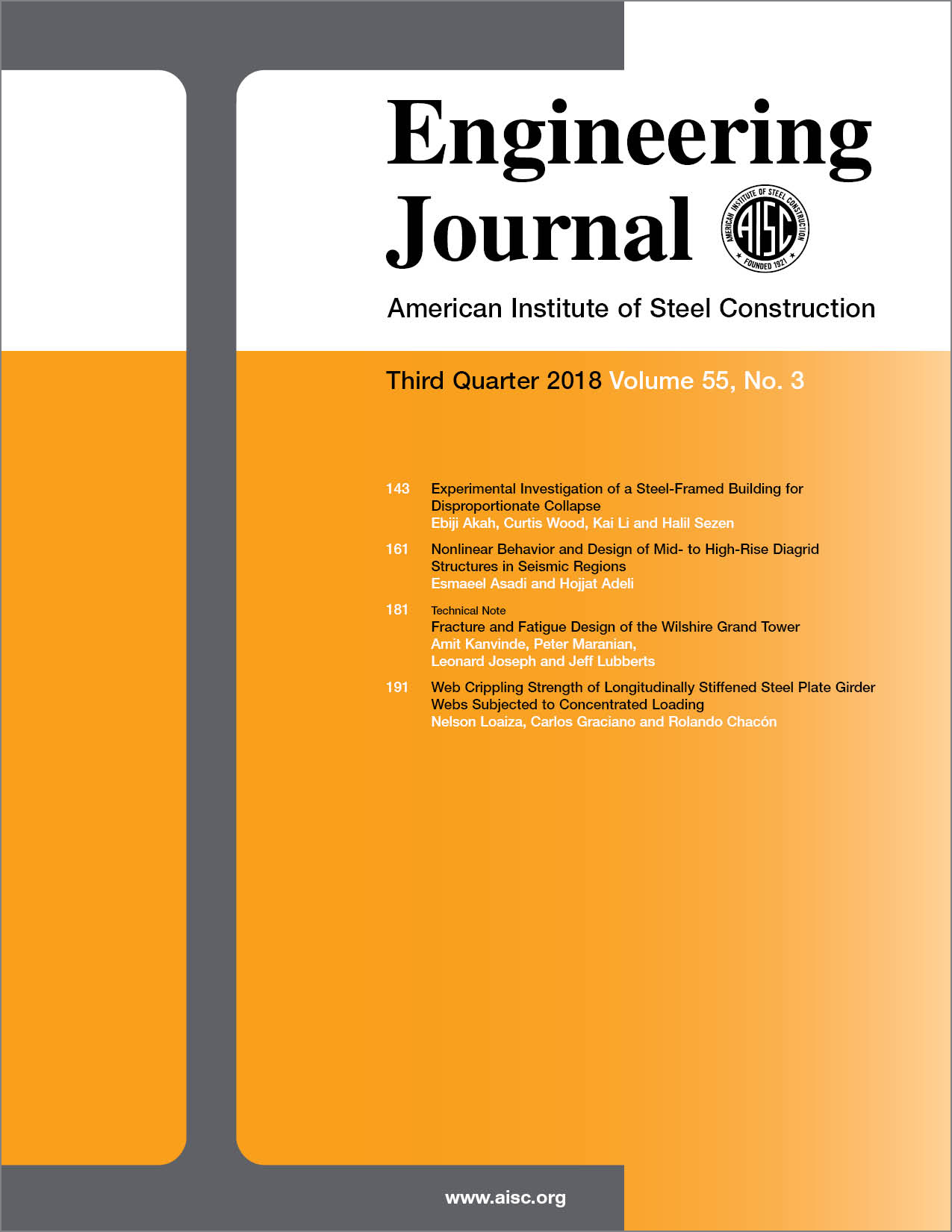Experimental Investigation of a Steel-Framed Building for Disproportionate Collapse
DOI:
https://doi.org/10.62913/engj.v55i3.1136Keywords:
steel frame, disproportionate collapse, full-scale experiment, infill wallAbstract
This paper presents the experimental and numerical investigation of the progressive collapse vulnerability of an existing steel building, Haskett Hall, on the Ohio State University campus. The building was tested by removing one of the first-story columns to observe its collapse resistance and to evaluate the effectiveness of current modeling and analysis guidelines. Progressive collapse is a relatively large partial or complete collapse of a structure due to the loss of a vertical load-carrying element—a column in this case. Few researchers have been able to conduct full-scale experiments to understand the progressive collapse mechanism. In this research, deflections and deformations of steel structural components were measured during the field experiment. Computational models and simulations were examined and compared with the experimental data from the field tests. The contribution and effects of infill walls to progressive collapse resistance of frame structures were investigated. The test data collected in this research can be used to help develop recommendations for improved procedures for progressive collapse analysis of frame buildings.

